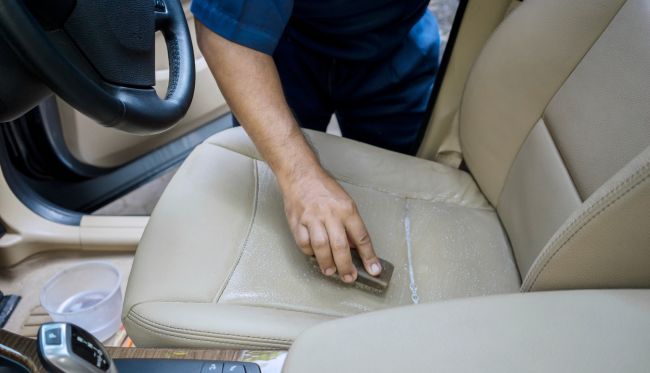The interior of a car significantly contributes to its overall aesthetic and comfort. Over time, however, upholstery can become worn, torn or stained, detracting from the vehicle’s appearance and value. Car upholstery repair is an effective way to restore the interior, making it look new again.
Common Upholstery Issues
Tears and Rips
Tears and rips in car upholstery are common, especially in older vehicles. These can occur due to everyday wear and tear, sharp objects or accidents. Ignoring small tears can lead to larger, more unsightly damage over time.
Stains and Spills
Stains from food, drinks and other substances can mar the appearance of your car’s interior. Some stains can be particularly stubborn and difficult to remove with regular cleaning methods.
Fading and Discoloration
Exposure to sunlight can cause upholstery materials to fade and discolor. This is especially prevalent in leather and fabric seats, leading to a dull and aged look.
Sagging and Foam Degradation
Over time, the foam padding beneath the upholstery can degrade, leading to sagging and loss of support. The automotive fasteners can become loose and need to be replaced. This can make seats uncomfortable and affect the overall driving experience.
Repair Techniques
Patching and Stitching
For small tears and rips, patching and stitching can be an effective repair method. This involves sewing the torn edges together and reinforcing the area with a patch. It’s important to use matching thread and fabric to ensure the repair blends seamlessly with the rest of the upholstery.
Stain Removal
Removing stains from car upholstery requires the right cleaning products and techniques. Different materials require different approaches:
- Fabric Upholstery: Use a fabric cleaner specifically designed for automotive interiors. Apply the cleaner to the stain, gently scrub with a soft brush and blot with a clean cloth.
- Leather Upholstery: Clean leather with a mild soap solution and a soft cloth. For tougher stains, use a leather cleaner and conditioner to restore the material’s appearance and suppleness.
- Vinyl Upholstery: Use a vinyl cleaner or a mild soap solution to clean stains. Rinse thoroughly and dry with a clean towel.
Whatever the type of upholstery, choosing the right cleaner can make a big difference.
Foam Replacement
If the foam padding beneath the upholstery has degraded, it can be replaced to restore the seat’s comfort and shape. This involves removing the upholstery, replacing the old foam with new, high-density foam and reattaching the upholstery.
Maintenance Tips
Regular maintenance will keep your car’s upholstery in good condition and prevent the need for frequent repairs.
Regular Cleaning
Regularly clean your car’s interior to prevent dirt and grime buildup. Vacuum fabric seats and carpets and wipe down leather and vinyl surfaces with appropriate cleaners.
Protect from Sunlight
Use sunshades and park in shaded areas to protect your car’s interior from UV damage. UV protectants can also be applied to leather and vinyl surfaces to prevent fading and cracking.
Use Seat Covers
Seat covers provide an additional layer of protection for your upholstery. They are especially useful for preventing stains and wear in high-traffic areas like the driver’s seat.
Address Spills Immediately
Clean up spills as soon as they occur to prevent stains from setting. Keep a stash of cleaning supplies in your car for quick access.
Car upholstery repair is an important part of vehicle maintenance that helps preserve the interior’s appearance and comfort. Regular maintenance and prompt attention to minor damages can prevent more extensive repairs down the line, keeping your car’s interior in top condition for years to come.






